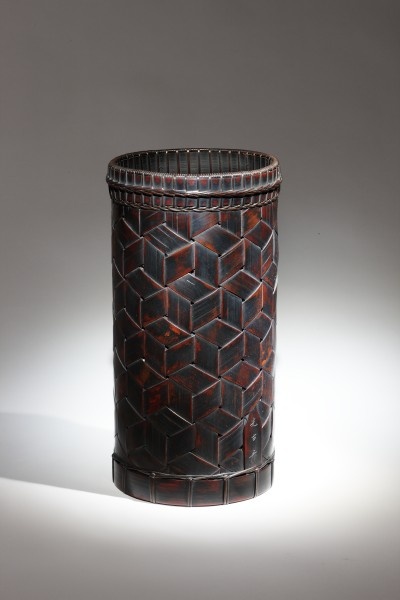Während der Azuchi-Momoyama-Zeit entwickelte sich, von den Teemeistern ausgehend, die Wertschätzung für das seit Urzeiten bekannte, alltägliche Material Bambus und seine Anmutung „kultivierter Armut“. Im Mittelpunkt der Wertschätzung stand eine wenig bearbeitet wirkende Natürlichkeit. So wurden grob beschnittene Bambusrohre als Blumengefäße genutzt. Unsere Korbvase lässt mit ihrer strengen Form an diese zurückhaltenden Bambusrohre denken. Der dreidimensionale Effekt verrät jedoch die gestalterische Virtuosität. (Text: Anne-Katrin Ehrt)
signiert: Kôkosai
Ankauf 1904.
en

